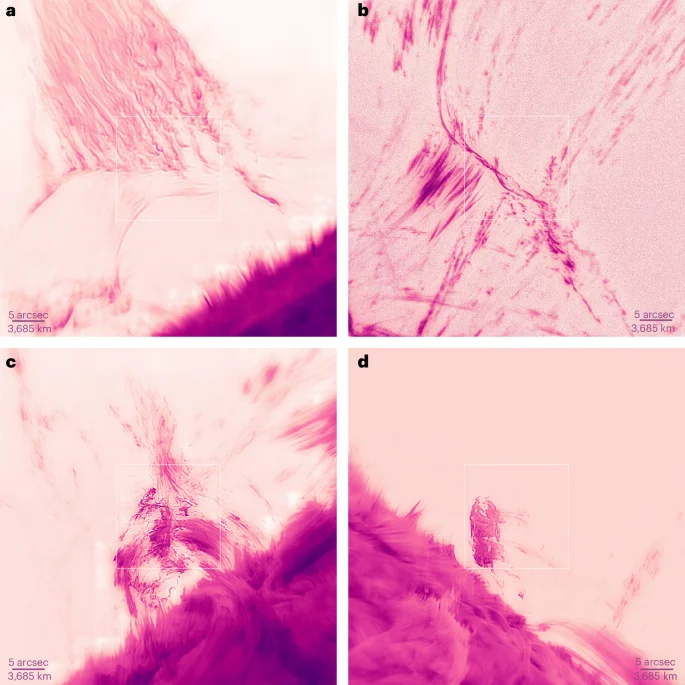
Groundbreaking Adaptive Optics Reveal Sun’s Corona in Unprecedented Detail
Ground-based telescopes just achieved a major upgrade. Scientists are now using adaptive optics (AO) to observe the Sun's corona with groundbreaking precision. This innovative technique is providing unprecedented details of our star's atmosphere and potentially unlocking answers to long-standing solar mysteries.
Modern ground-based telescopes depend on adaptive optics to deliver astonishingly clear images, counteracting distortions caused by Earth’s atmosphere. Now, a team at the National Solar Observatory (NSO) is pushing the boundaries further. Their use of AO on the 1.6-meter Goode Solar Telescope is revealing the Sun’s corona unlike ever before.
But why is this so crucial? The corona, the Sun's outermost layer, extends millions of kilometers into space and is inexplicably hotter than the photosphere beneath it. This is known as the 'coronal heating problem'. Furthermore, the corona's magnetic fields fuel coronal mass ejections (CMEs), which can trigger geomagnetic storms on Earth, impacting our technology.
Observing the corona is incredibly difficult due to its dimness compared to the Sun's surface. Space-based coronagraphs and total solar eclipses offer glimpses, but ground-based observations face atmospheric interference. This is where adaptive optics steps in. Computer-controlled mirrors actively correct for atmospheric disturbances, resulting in remarkably clear images.
Dirk Schmidt, an Adaptive Optics Scientist at the NSO, is the lead author of a paper published in Nature Astronomy, detailing their work. The research emphasizes that resolving fine structures in the corona may provide important insights into rapid eruptions and coronal heating.

Vasyl Yurchyshyn, a professor at the NJIT-Center for Solar-Terrestrial Research, notes that these are by far the most detailed observations of this kind, revealing previously unseen features.
One primary focus is understanding the plasma that makes up solar prominences, loops, and rain. By observing the plasma's fine details, researchers hope to crack the coronal heating problem. Schmidt highlighted that boosting the resolution by a factor of 10 marks a technological advancement that is a game changer.
The groundbreaking observations are not just about stunning visuals; they enable scientists to test computer models of coronal processes. With this new AO system, scientists achieved an unprecedented resolution of 63 kilometers, pushing the Goode Solar Telescope to its theoretical limit.
Philip Goode, a research professor at NJIT-CSTR, believes this system is a technological leap. A similar system is being planned for the National Science Foundation's Daniel K. Inouye Solar Telescope in Hawaii, sporting a 4-meter mirror.
"This transformative technology is likely to reshape ground-based solar astronomy," says Goode, highlighting the potential for numerous discoveries in the coming years.
Another paper mentioned previously unseen structures and dynamics when observing the decay of failed prominence eruptions. These structures include twisted plasmoids that are providing great insight into the suns atmospheric processes.
Understanding how the Sun's corona is heated to millions of degrees while its surface only reaches 6,000 K is a key question. Better data on coronal rain, in which strands of coronal plasma cool and fall back to the surface, could hold answers. New observations find coronal rain strands narrower than 20 kilometers.
In short, this new adaptive optics system represents a monumental leap in solar observation capabilities, promising to uncover mysteries about our solar systems very own sun.
What aspects of the Sun’s corona are you most curious about? Share your thoughts and predictions in the comments below!